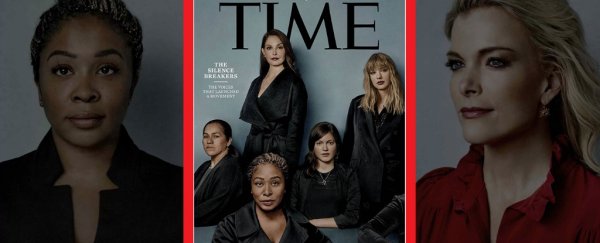People tend to adapt, capable of shifting towards one idea in favor of another as more information come in.
True to the combination of artificial intelligence (AI) and human wisdom it functions on, Unanimous AI's artificial swarm intelligence, known as UNU, is capable of this kind of adjustment too.
Towards the end of November, their swarm AI favored Russian president Vladimir Putin to be TIME's Person of the Year for 2017. However, in an updated prediction on December 4, the swarm dropped Putin from among its final contenders.
UNU instead gave the top spot to the #MeToo movement, closely followed by U.S. president Donald Trump. Both were among the original finalists, together with Putin.
By the morning of December 6, TIME published the Person(s) of the Year for 2017. The winners have been given the monicker "The Silence Breakers", referring to those who spoke out against sexual assault and harassment.
In other words, as the swarm intelligence correctly predicted, it was the #MeToo campaign and the people behind it that won. TIME short-listed Trump second for the title.
 (Unanimous AI)
(Unanimous AI)
UNU's top four contenders also included North Korean dictator Kim Jong-un and Robert Mueller, special prosecutor investigating Russian interference in the 2016 US election. TIME placed Mueller 4th for Person of the Year, and Kim Jong-un for 5th.
As Unanimous AI founder and CEO Louis Rosenberg previously explained to Futurism, a swarm AI works by combining real-time human input with algorithms to produce what he calls an "emergent hive mind".
This tends to be smarter than your regular AI and an individual human. UNU's record of successes, which includes predicting President Trump as TIME's Person of the Year in 2016, can attest to that.
(Observers might see some irony here, as last year's winner is arguably the person who started a larger conversation around sexual harassment.)
Coming up with a prediction for the Person of the Year proved challenging, Rosenberg said. Thanks to how swarm AI works, which amplifies "the intelligence of human populations using AI algorithms modeled after swarms in nature," it wasn't impossible.
Unlike TIME's very own poll, which favored Saudi Arabia crown prince Mohammed bin Salman, the swarm AI was able to account for uncertainties. Here's a quick recap of the process.
 (Unanimous AI)
(Unanimous AI)
"For Person of the Year, this was very important as world events were changing fast," Rosenberg explained to Futurism.
"We ran an update Swarm AI prediction on November 24 and the #MeToo campaign had jump up to a 59 percent chance of winning, as predicted by our Swarm AI platform, and Putin was fading fast. We ran our final prediction on December 1, and this time #MeToo was pulling away from the pack, and Putin was no longer in our top picks at all."
Swarm AI has been proven to be successful in both formal academic studies and in more informal, high-profile predictions, Rosenberg noted. The power of the human hive, however, goes beyond just making these predictions.
Overall, it's the way a swarm AI can optimise decision-making, while banking on human insight that's available in real-time, that make the technology particularly impressive.
"Forecasting using Swarm AI technology is all about generating optimised outcome probabilities for the various alternatives by weighting competing sets of information and converging on solutions that maximise the collective confidence inherent in a population," Rosenberg explained.
"This means, as world events changed in real-time over the last few weeks, the swarming algorithms allowed the forecasts to adapt, converging on updated probabilities."
"[O]f the hundreds of predictions we do each year, Person of Year is a particularly difficult one because there are so many candidates," Rosenberg told Futurism.
"TIME had published a list of 33 options on their website to choose from. That's a difficult call in any year, and this was a very complex year with many high profile choices in the running - from Trump and Putin, to Mueller and Kim Jung-un."
This article was originally published by Futurism. Read the original article.
